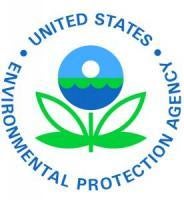(New York, N.Y.) The U.S. Environmental Protection Agency (EPA) released a proposed plan to remove contaminated soil from the site of former lagoons at the Nepera Chemical Company, Inc. Superfund site in Hamptonburgh, N.Y. EPA has developed three options to address contaminated soil at the former lagoons and has selected excavation and off-site disposal of the contaminated soil as its preferred alternative. This plan amends EPA’s 2007 cleanup plan for the site, which called for excavating contaminated soil and treating the soil on-site to degrade contaminants, but not removing soil from the site. The 2007 plan also included treatment of contaminated ground water at the site. The ground water treatment activities at the site will not change under the amended plan. The public can comment on EPA’s plan until June 20, 2011. On June 15, EPA will hold a public meeting to discuss the plan at 7:00 p.m. at the Hamptonburgh Town Hall at 18 Bull Road in Campbell Hall, N.Y.
“EPA’s preferred alternative for removing contaminated soil from the Nepera Chemical site is the fastest way to complete this critical phase of the site cleanup,” said EPA Regional Administrator Judith Enck. “The contaminants in this soil – especially semi-volatile and volatile organic compounds – are harmful to human health, so removing them as quickly as possible must be a priority.”
Subsurface soil at the Nepera Chemical site contains a variety of contaminants, including semi-volatile and volatile organic compounds. People could potentially be harmed if they ingest or come into contact with contaminated soil or water. Ground water samples from nearby residential wells and three public supply wells have not revealed site-related contamination. Additionally, the site is fenced in order to limit the potential for exposure to site-related surface soil contamination.
Three cleanup options for addressing the contaminated soil are described in EPA’s proposed plan for the site:
- Excavating contaminated soil which would be disposed of at a permitted off-site facility. This option would take about one year to complete and cost about $3,025,000. This is EPA’s preferred alternative.
- Excavating contaminated soil and treating it on-site using techniques to extract and break down contaminants in the soil. This option would take at least two years and cost about $3,119,000.
- Taking no action, which is an option that EPA is required to consider for any cleanup plan.
The Nepera Chemical Company, Inc., Superfund site is a 29.3-acre former industrial waste disposal facility. Nepera made a variety of pharmaceutical and industrial chemicals. Between 1953 and 1967, lagoons at the site received approximately 50,000 gallons of waste water per day from the Nepera Chemical plant in Harriman, N.Y. The six backfilled lagoons cover roughly five acres in total. State inspectors detected leaks from the lagoons in 1958 and 1960, and operations ended in December 1967. About 7,000 people live within three miles of the site.
Contamination at the site has been addressed in two stages: short-term actions and a long-term remedial phase focusing on cleanup of the entire site. Short-term actions have included the filling of the lagoons in 1974, the construction of a fence limiting access to the site and the disposal of three drums found during an excavation in 1991. Ground water monitoring and soil sampling have been a primary component of the long-term remedial investigation. EPA approved a final remedial investigation study in March 2006 and completed its proposed cleanup plan in July 2007. This plan included excavating contaminated soil and treating it on-site to degrade the contaminants. Additional data collected since implementing the 2007 plan showed that less soil than originally expected would need to be removed from the site. The expected costs of removing soil also decreased. EPA proposed removing excavated soil from the site as it will significantly shorten the time needed to complete the site cleanup.
The proposed plan is available on EPA’s website at http://www.epa.gov/region02/superfund/npl/nepera/. Members of the public can comment on EPA’s proposed plan until June 20, 2011 and send them to: Mark Dannenberg, Remedial Project Manager, U.S. EPA, 290 Broadway, 20th Fl., New York, NY 10007-1866.



 />i
/>i
